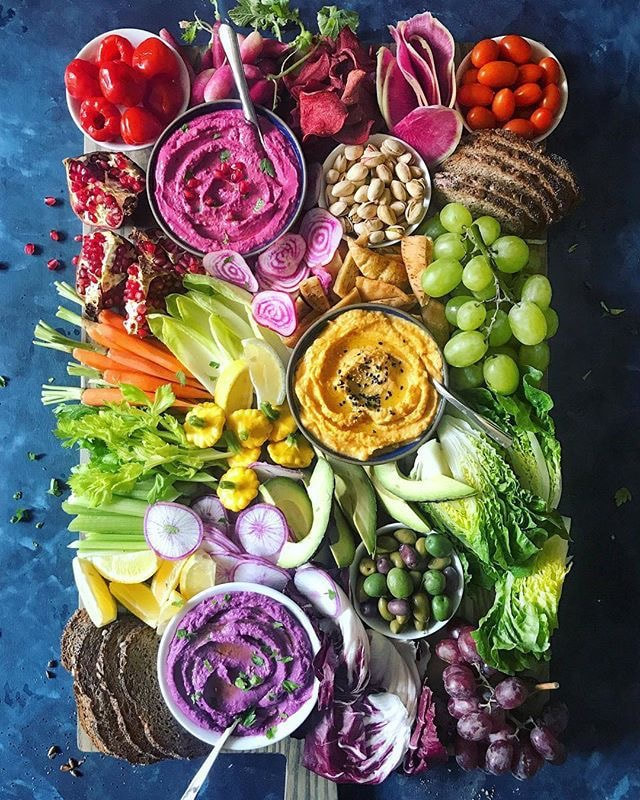 For those looking to lose weight, it is best to focus on choosing whole plant foods, and choice is far more important that calorie count. When your diet is primarily fresh whole plants, the fiber and water content of your food with naturally moderate your appetite and leave you feeling full and satisfied. Focus on crowding out processed and animal foods with more plants, instead of setting rigid rules around what you can't have. If you have struggled in the past, consider working with a Thrive Wellness Coach to build some new dietary habits.
“A healthy approach to weight loss focuses on choosing the right kind of foods, not on the quantity of the food you eat. When you have the right foods on your side, the calories and portions fall into line on their own, and weight loss is almost automatic.” Dr Neal Barnard’s Program for Reversing Diabetes with Diet Forks Over Knives examines the profound claim that most, if not all, of the chronic diseases that afflict us can be controlled or even reversed by rejecting animal-based and processed foods.
The major storyline traces the personal journeys of Dr. T. Colin Campbell, a nutritional biochemist from Cornell University, and Dr. Caldwell Esselstyn, a former top surgeon at the world-renowned Cleveland Clinic. On separate paths, their discoveries and groundbreaking research led them to the same startling conclusion: Chronic diseases including heart disease and type 2 diabetes can almost always be prevented—and in many cases reversed—by adopting a whole-food, plant-based diet. The idea of food as medicine is put to the test. The film follows everyday Americans with chronic conditions as they seek to reduce their dependence on medications and learn to use a whole-food, plant-based diet to regain control over their health and their lives. Watch Forks Over Knives "Diet culture has made food and health a performance. Healing from diet culture and weight stigma means untangling from the performance and finding your way into a place where your needs, wants, desires and boundaries are louder than the externalized rules that demand adherence in exchange for worthiness."
From the Be Nourished Blog “A long commute to work might further job prospects and put more money in the bank but it could also increase the risk for divorce by 40 percent, a new study from Umeå University in northern Sweden shows.
‘To be able to commute to work can be a positive thing because it means you don’t have to uproot your family with every career move but it can also be a strain on your relationship,’ said author Erika Sandow to The Local. According to the study, 11 percent of Swedes have a journey to work that consists of a 45-minute commute or longer. Many commuters have small children and are in a relationship. Most are men. ‘One of the long-term risks with commuting is that it can sustain gender-based stereotypes both at home and in the labour market,’ Sandow said. In families where the man commutes, the woman is often forced to take a less qualified job closer to home, which means both less money as well as a larger share of the responsibility for kids and household. Although women commuters also experience an increase in salary and career prospects, earlier studies have shown that they experience more stress and feel less successful career-wise than commuting men. The risk of divorce goes up by 40 percent for commuters and the risk is the highest in the first few years of commuting. According to the study, most people that start commuting to work continue doing so and more than half that travel a long distance to work today have done so for more than five years. Five years also seems to be a wathershed because according to the study, most commuters and their families have managed to adapt to the situation by then.” Read the full article here. Smoothies are a great way to sneak more servings of fruit and vegetables into your day. Browse these 8 recipes for whole food plant-based smoothies that will cleanse your system with fiber, water and micronutrients.
"What works with weight loss is if you choose water or a non-caloric beverage over a caloric beverage and/or eat a diet higher in water-rich foods that are healthier, more filling, and help you trim calorie intake," says Penn State researcher Barbara Rolls, PhD, author of The Volumetrics Weight Control Plan.
Food with high water content tends to look larger, its higher volume requires more chewing, and it is absorbed more slowly by the body, which helps you feel full. Water-rich foods include fruits, vegetables, broth-based soups, oatmeal, and beans. According to Sally Kempton, "We don’t always know why difficult people show up in our lives. There are some good theories about it, of course. Jungians, along with most contemporary spiritual teachers, tell us that ALL the people in our lives are mirroring what’s inside us, and that once we clear our minds and clarify our hearts; we’ll stop attracting angry girl friends, prickly co-workers and tyrannical bosses. Then there’s the view—not necessarily inconsistent with the first– that life is a school, and that difficult people are our teachers. (In fact, when someone tells you that you’re a teacher for him, it’s often a good idea to ask yourself exactly what it is about you that he finds abrasive!) One thing is clear, though: at some point in our lives, most of us will have someone around us who is show-stoppingly hard to take. Sometimes, it seems as if everyone we know is giving us trouble.
So, one of the great on-going questions for anyone who wants to live an authentic spiritual life without going into a cave is this: how do you deal with difficult people without being harsh, wimpy, or putting them out of your heart? How can you explain to your friend who keeps trying to enlist you in service of her own dramas, that you don’t want to be part of her latest scenario of mistrust and betrayal -- and still remain friends? How do you handle the boss whose tantrums terrorize the whole office, or the co-worker who bursts into tears several times a week and accuses you of being abrupt when all you’re trying to do is get down to business? More to the point, what can you do when the same sorts of difficult people and situations keep showing up again and again in your life? Should you chalk it up to karma? Should you find ways to resolve it through discussion or even pre-emptive action? Or should you take the truly challenging view that the people in your life who seem harsh or clingy or annoying are actually reflections of your own disowned, or shadow tendencies? In other words, is it really true that we project onto other people the qualities in ourselves that we dislike or disallow, and then condemn in someone else the traits we reject in ourselves? Does dealing with difficult people have to begin with finding out what you might need to work on in yourself? The short yogic answer here is "Yes." Obviously, that doesn’t mean you should overlook other people’s anti-social behavior. (Owning your own part in a difficult relationship is not the same thing as wimping out of a confrontation!) Moreover, some relationships are so difficult that the best way to change them is to leave. But here’s the bottom line: Try as we will, we can’t control other people’s personality and behavior. Our real power lies in our ability to work on ourselves. This, of course, is Yoga 101. We all ‘know’ it, yet when we’re in the crunch of relational malfunction, it’s often the first thing we forget. So, here it is again: your own inner state is your only platform for dealing successfully with other people. Not even the best interpersonal technique will work if you do it from a fearful, judgmental, or angry state of mind. Your own open and empowered state is the fulcrum, the power point, from which we can begin to move the world. [...] After all, what makes someone difficult? Essentially, it’s their energy. We don’t have to be students of quantum field theory or Buddhist metaphysics to sense how much the energies around us affect our moods and feelings. What makes someone tough for you to take? Basically, it has to do with how your energies interact with theirs. Every one of us is at our core an energetic bundle. What we call our personality is actually made up of many layers of energy -- soft, tender, vulnerable energies as well as powerful, controlling or prickly energies. We have our wild and gnarly energies, our kindly energies, our free energies and our constricted, contracted ones. These energies, expressing themselves through our bodies, thoughts, and emotions, and minds, manifest as our specific personality signature at any given moment. What we see on the surface, in someone’s body language and facial expressions, is the sum of the energies that are operating in them. As we speak, its the energy behind our words that most deeply impacts others. The beginning of change, then, is learning how to recognize and modulate our own energy patterns. The more awareness we have -- that is, the more we are able to stand aside and witness our personal energies of thought and feeling and (rather than identifying with them) "the easier it is to work with our own energies. This takes practice. Most people don’t start out with a highly developed awareness of their own energy or the way it impacts others -- and even fewer of us know how to change the way our energies work together." Sally Kempton is a student of Swami Muktananda, an author and a spiritual teacher. Excerpt above is from this article. "About 40 percent of people's daily activities are performed each day in almost the same situations, studies show. Habits emerge through associative learning. 'We find patterns of behavior that allow us to reach goals. We repeat what works, and when actions are repeated in a stable context, we form associations between cues and response,' a researcher explains.
Full Story Much of our daily lives are taken up by habits that we've formed over our lifetime. An important characteristic of a habit is that it's automatic-- we don't always recognize habits in our own behavior. Studies show that about 40 percent of people's daily activities are performed each day in almost the same situations. Habits emerge through associative learning. "We find patterns of behavior that allow us to reach goals. We repeat what works, and when actions are repeated in a stable context, we form associations between cues and response," Wendy Wood explains in her session at the American Psychological Association's 122nd Annual Convention. What are habits? Wood calls attention to the neurology of habits, and how they have a recognizable neural signature. When you are learning a response you engage your associative basal ganglia, which involves the prefrontal cortex and supports working memory so you can make decisions. As you repeat the behavior in the same context, the information is reorganized in your brain. It shifts to the sensory motor loop that supports representations of cue response associations, and no longer retains information on the goal or outcome. This shift from goal directed to context cue response helps to explain why our habits are rigid behaviors. There is a dual mind at play, Wood explains. When our intentional mind is engaged, we act in ways that meet an outcome we desire and typically we're aware of our intentions. Intentions can change quickly because we can make conscious decisions about what we want to do in the future that may be different from the past. However, when the habitual mind is engaged, our habits function largely outside of awareness. We can't easily articulate how we do our habits or why we do them, and they change slowly through repeated experience. "Our minds don't always integrate in the best way possible. Even when you know the right answer, you can't make yourself change the habitual behavior," Wood says. Participants in a study were asked to taste popcorn, and as expected, fresh popcorn was preferable to stale. But when participants were given popcorn in a movie theater, people who have a habit of eating popcorn at the movies ate just as much stale popcorn as participants in the fresh popcorn group. 'The thoughtful intentional mind is easily derailed and people tend to fall back on habitual behaviors. Forty percent of the time we're not thinking about what we're doing,' Wood interjects. 'Habits allow us to focus on other things…Willpower is a limited resource, and when it runs out you fall back on habits.' How can we change our habits? Public service announcements, educational programs, community workshops, and weight-loss programs are all geared toward improving your day-to-day habits. But are they really effective? These standard interventions are very successful at increasing motivation and desire. You will almost always leave feeling like you can change and that you want to change. The programs give you knowledge and goal-setting strategies for implementation, but these programs only address the intentional mind. In a study on the 'Take 5' program, 35 percent of people polled came away believing they should eat 5 fruits and vegetables a day. Looking at that result, it appears that the national program was effective at teaching people that it's important to have 5 servings of fruits and vegetables every day. But the data changes when you ask what people are actually eating. Only 11 percent of people reported that they met this goal. The program changed people's intentions, but it did not overrule habitual behavior. According to Wood, there are three main principles to consider when effectively changing habitual behavior. First, you must derail existing habits and create a window of opportunity to act on new intentions. Someone who moves to a new city or changes jobs has the perfect scenario to disrupt old cues and create new habits. When the cues for existing habits are removed, it's easier to form a new behavior. If you can't alter your entire environment by switching cities-- make small changes. For instance, if weight-loss or healthy eating is your goal, try moving unhealthy foods to a top shelf out of reach, or to the back of the freezer instead of in front. The second principle is remembering that repetition is key. Studies have shown it can take anywhere from 15 days to 254 days to truly form a new habit. 'There's no easy formula for how long it takes,' Wood says. Lastly, there must be stable context cues available in order to trigger a new pattern. "It's easier to maintain the behavior if it's repeated in a specific context," Wood emphasizes. Flossing after you brush your teeth allows the act of brushing to be the cue to remember to floss. Reversing the two behaviors is not as successful at creating a new flossing habit. Having an initial cue is a crucial component." Journal References 1. D. T. Neal, W. Wood, M. Wu, D. Kurlander. The Pull of the Past: When Do Habits Persist Despite Conflict With Motives? Personality and Social Psychology Bulletin, 2011; 37 (11): 1428 DOI: 10.1177/0146167211419863 2. Sarah Stark Casagrande, Youfa Wang, Cheryl Anderson, Tiffany L. Gary. Have Americans Increased Their Fruit and Vegetable Intake?The Trends Between 1988 and 2002. American Journal of Preventive Medicine, 2007; 32 (4): 257 DOI: 10.1016/j.amepre.2006.12.002 Source Society for Personality and Social Psychology. "How we form habits, change existing ones." ScienceDaily. ScienceDaily, 8 August 2014. www.sciencedaily.com/releases/2014/08/140808111931.htm According to Andrew Cohen, “Ego is the deeply felt sense of being separate and superior. Indeed, it is an emotional and psychological compulsion to see and feel the self as being separate from and superior to the other, the world, and the whole universe. It is that locus point where the sense of individuality is also a sense of alienation, where the experience of autonomy is also one of isolation, and where even the experience of freedom is always shadowed, by a deeper sense, at the core of our being, by a sense of bondage, limitation, and hopelessness.
I believe that for most of us, the only solution to this evolutionary cul-de-sac, the only way to our own higher development, lies in the context of human relationship, relationship based upon a breakthrough to a shared experience and recognition of consciousness beyond ego -- a consciousness in which all parties experience simultaneously their own individual and collective transparency while remaining fully and completely themselves. In this higher We consciousness, we recognize, perhaps for the first time, why ego is the only problem, the only obstacle to the fulfillment of our imminent evolutionary potential. As long as the fears and desires of the ego remain the fundamental locus of our attention and the impulse to evolve is but a faint murmur in the background of awareness, nothing less than overwhelming force will bring the ego to its knees. The force of what? The force of impersonal absolute love that sees no other and recognizes only itself. In that love, our own higher conscience is awakened and screams relentlessly for our unconditional surrender without compromise. And it will keep on screaming until we all have finally transcended the need to be separate."  According to the VIA Institute on Character, "Appreciation of Beauty and Excellence is a strength that helps you connect with something outside yourself. It is about noticing the beauty all around you and feeling awe and appreciation for high-quality performance and work. It is a strength that can help you cope with emotional challenges or difficulties." Learn more about developing character strengths on the VIA Institute's website. 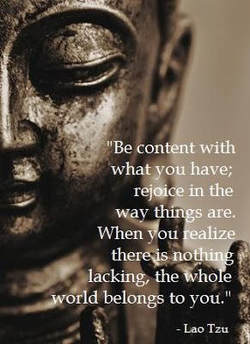 "Fame or integrity: which is more important? Money or happiness: which is more valuable? Success of failure: which is more destructive? If you look to others for fulfillment, you will never truly be fulfilled. If your happiness depends on money, you will never be happy with yourself. Be content with what you have; rejoice in the way things are. When you realize there is nothing lacking, the whole world belongs to you." From chapter 44 of The Tao Te Ching written by Lao-Tau and translated by S. Mitchell 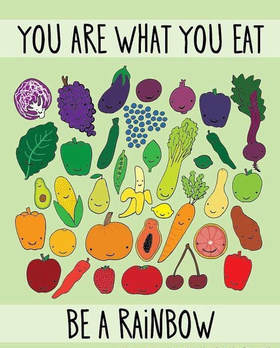 As any parent of a picky eater knows, getting children to eat for health can be a challenge. Check out Sharon McRae's tips for transitioning your little ones to a plant-based diet. 1. I explained to my three children why we were making the transition to a plant-strong diet. We watched the fabulous movie “Forks Over Knives” together. 2. We explored recipes from some amazing recipe books including “Engine 2 Diet” by Rip Esselstyn, “Unprocessed” by Chef AJ, and “Super Immunity” by Dr. Joel Fuhrman, among others, and I began experimenting with new foods with family input. 3. I found delicious substitutes for the kids’ favorite foods. We used Daiya “cheese” initially and later transitioned away from it. See our recipe for pizzas made with pizza-hummus. The kids say it’s the best pizza they’ve ever eaten! And see the recipes for raw brownies from Chef AJ and black bean brownies from Dr. Fuhrman which are all huge hits with the kids. 4. I encouraged my family to help with choosing recipes and with food preparation. 5. Our new kitchen tools include a huge salad bowl, a rice cooker to make big batches of grains for the week, a pressure cooker to quickly cook beans (some of which otherwise take 45 minutes to boil), and for a big batch of some type of bean vegetable soup. A blender makes quick, delicious salad dressings, sauces & smoothies, and a food processor makes bean spreads and nut butters for sandwiches and snacks. 6. Our motto: Be prepared and plan ahead. Having grains, beans and veggies on hand allows me to throw together a meal in minutes. We always have hummus or another bean dip, nut butters, and plenty of fruits and vegetables in the fridge. We never travel without snacks like fresh or dried fruits, kale chips, hummus and sprouted grain bread, carrot and celery sticks, so we are never caught hungry without plant-strong, unprocessed options. 7. I shared plant-strong recipes with the kids’ friends when they were here for play dates, everything from kale to black beans, and shared the recipes with their parents. It was good for my kids to be able to share healthy foods with their friends, and that they taste great for everyone! When extended family is over, exclusively plant-strong meals are popular with everyone. 8. I began sending the kids to parties with a plant-strong dish to share for everyone. I call or email the host/hostess in advance and explain that we do not eat animal-based products, including dairy, and I offer to send the kids with a dish. Almost every time, the dish is a huge hit and the host/hostess asks for the recipe! A whole-food, plant-based diet is centered on whole, unrefined, or minimally refined plants. It’s a diet based on fruits, vegetables, tubers, whole grains, and legumes; and it excludes or minimizes meat (including chicken and fish), dairy products, and eggs, as well as highly refined foods like bleached flour, refined sugar, and oil.
(Note: By diet we mean long-term lifestyle eating pattern, and do not promote restrictive short-term diets of any kind.) Learn more about trainsitioning to a whole-foods plant-based lifestyle here.  Mindfulness helps us put some space between ourselves and our reactions, breaking down our conditioned responses. Follow the steps below to begin your own mindfulness practice: 1. Set aside some time. You don’t need a meditation cushion or bench, or any sort of special equipment to access your mindfulness skills—but you do need to set aside some time and space. 2. Observe the present moment as it is. The aim of mindfulness is not quieting the mind, or attempting to achieve a state of eternal calm. The goal is simple: we’re aiming to pay attention to the present moment, without judgement. Easier said than done, we know. 3. Let your judgments roll by. When we notice judgements arise during our practice, we can make a mental note of them, and let them pass. 4. Return to observing the present moment as it is. Our minds often get carried away in thought. That’s why mindfulness is the practice of returning, again and again, to the present moment. 5. Be kind to your wandering mind. Don’t judge yourself for whatever thoughts crop up, just practice recognizing when your mind has wandered off, and gently bring it back. That’s the practice. It’s often been said that it’s very simple, but it’s not necessarily easy. The work is to just keep doing it, slowing impacting the way you think to attain greater peace.  How long does it take to make a friend? According to Cari Romm, "If you've ever gone on a mission to make friends as an adult and found it frustrating, there's a reason why. According to new research out of the University of Kansas, making new friends is actually pretty time-consuming: The study found that it takes 50 hours of time together to consider someone a casual friend, 90 hours to consider them a "friend," and a whopping 200 hours before you consider them a close friend. As they say, good things take time." Read Romm's full article here.  Thank you to everyone that joined us for yoga today. Below are the class readings shared related to pursuing wholeness and authenticity to improve quality of life. "There is a little voice in all of us that is just a whisper. A tiny whisper. When you go into nature, into the wilds, especially alone, the whisper can come out and talk more. When you are in the city, you always have a list of things to do and think about. You can’t listen to the whisper. But when you are outside, you have much less to distract you. Inside each of us is the spirit that whispers. This little voice is our true self. If we can listen, it will start to get louder. Eventually, that whisper will be our normal voice. That’s when I really live. That is when dreams become reality. When I live from that deep intuitive place." From Walden by Henry David Thoreau The Spirit of Wholism "Just as we need to claim our wholeness and right relationship with ourselves a physical, mental, and spiritual beings, we also need to claim our rightful place in the world as a unique part of a greater whole. This awareness is all but lost in modern technological life. Once our ancestors lived in tune with Nature. They knew who they were because they recognized their intimate relationship to the big, consistent cycles that brought seed in Spring, growth in Summer, bounty in Fall. We Westerners, however, live as though we can conquer and dominate Nature with no detrimental effects. Our technological prowess has led us to believe that we are in no way dependent upon or connected with the great cycles of birth and growth by which our ancestors lived and died. But we are part of Nature, and Nature lives within us. We cannot prosper and remain separate from the natural world, for to do so is to remain severed from our own true natures. If we are to claim our power to heal, we must reclaim our awareness of ‘whole-ism.’ As these fundamental changes in awareness filter down through our lives, we begin to change the way we think. As we become whole, we will begin to question many of our previous assumptions. Just as we must acknowledge our need to be good stewards of our physical life-force, we cannot ignore the effect of our emotional life on our health. We can’t expect to be healthy in body, mind, and spirit if we don’t pay attention to each of them. We must give our bodies good fuel and regular exercise. We maintain our mental health by exercising (in other words, acknowledging and releasing) our emotions, and stimulating our minds. We nurture our spirits with music, meditation, or spiritual practice. However we choose to live our lives, we cannot remind ourselves often enough that these three elements - body, mind, and spirit - are inseparable elements of the whole human being." From Maximum Healing: Your East-West Guide to Natural Health by Mark Dana Mincolla, Ph.D. Most people overestimate what they can accomplish in a day, yet underestimate what they can accomplish in a month or year. If we apply this reality to change efforts one begins to understand the importance of patience, and building habits in support of incremental progress.
Especially when you are working towards personal transformation - allowing yourself time, and forgiving the occasional backslide, can be the determining factors for success. Acknowledge that change requires tremedous effort and when frustrations arise all one must do is to keep going, no matter the pace. If you feel like you have hit a brick wall with your change project, Thrive Wellness Coaching can help! Request a FREE COACHING SESSION to learn more. |
Archives
January 2022
Categories
All
|
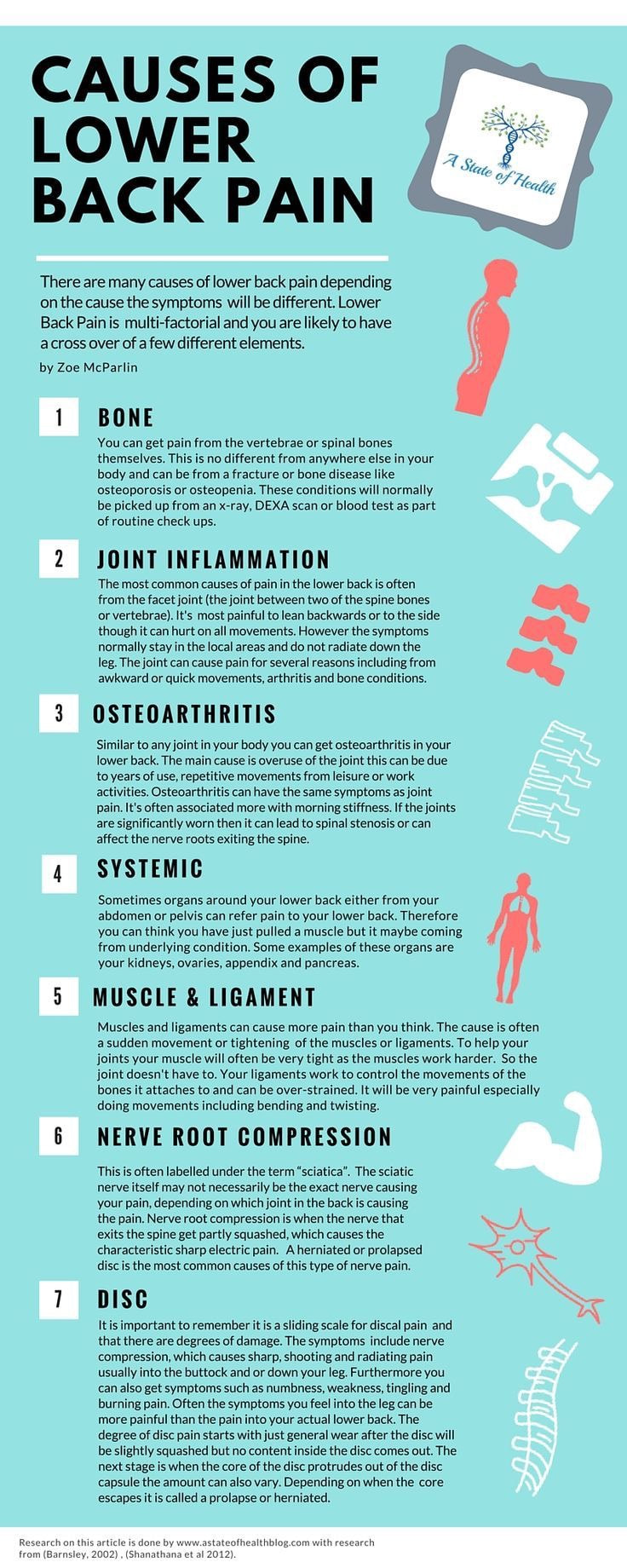

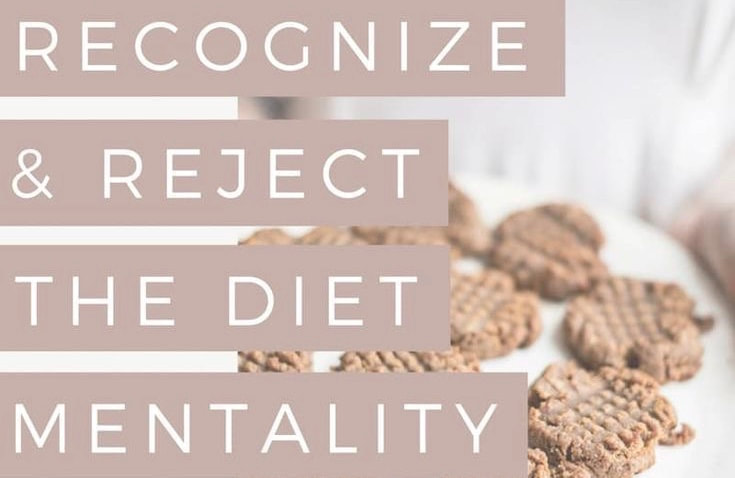


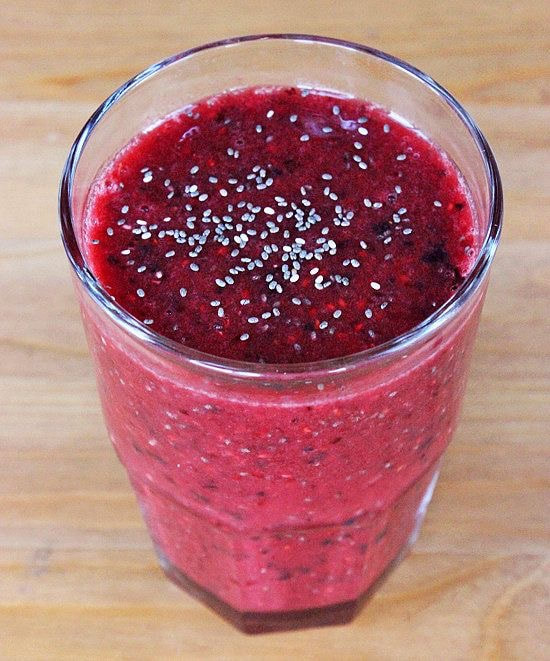




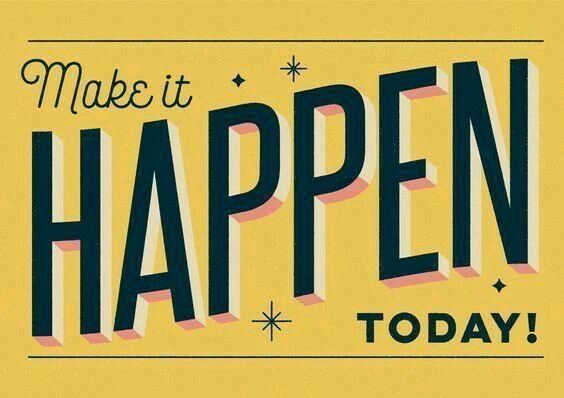
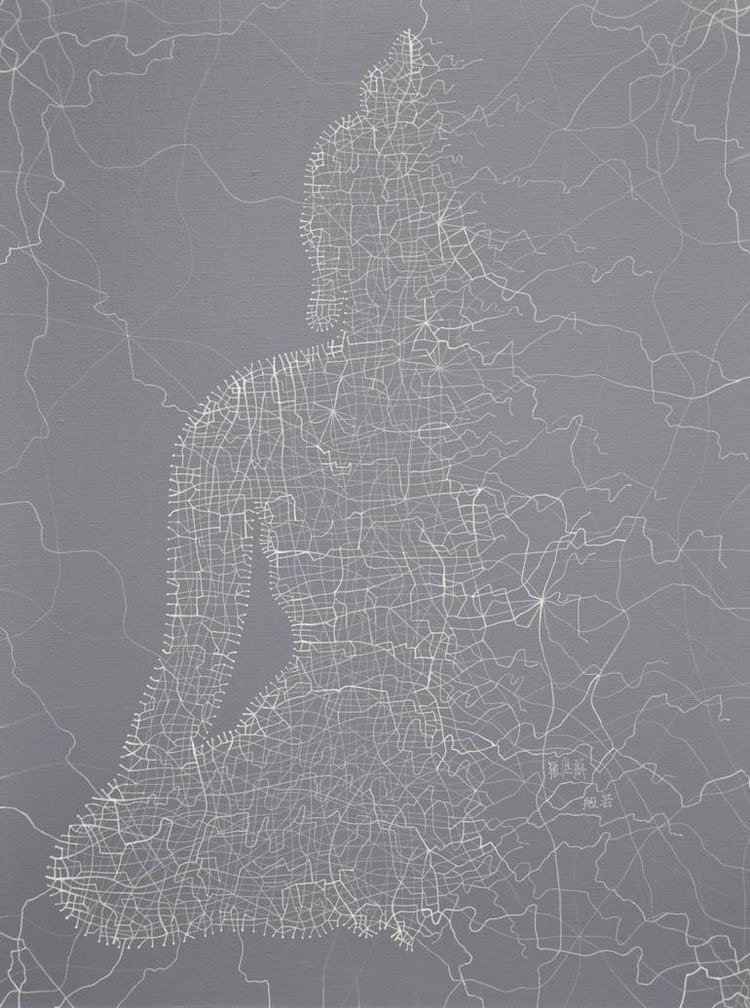
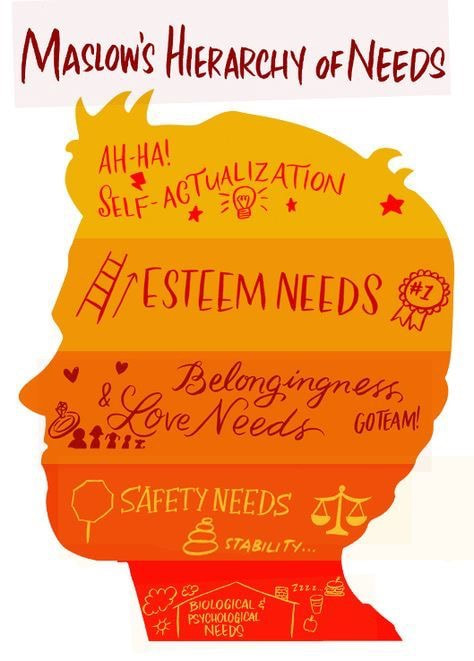


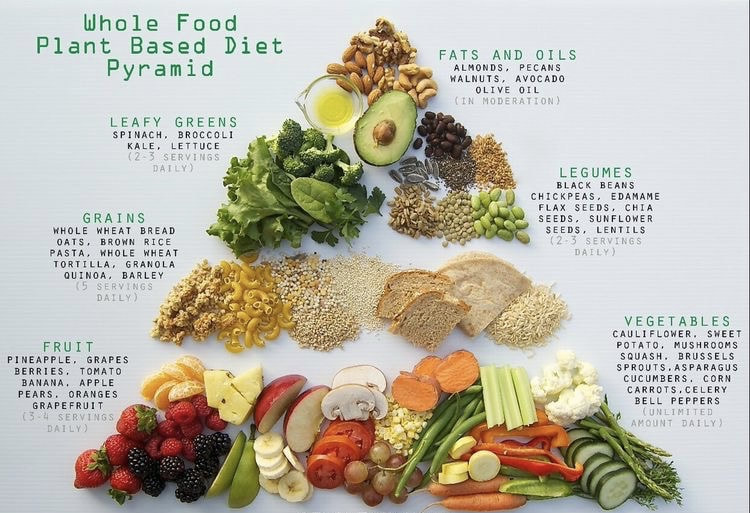
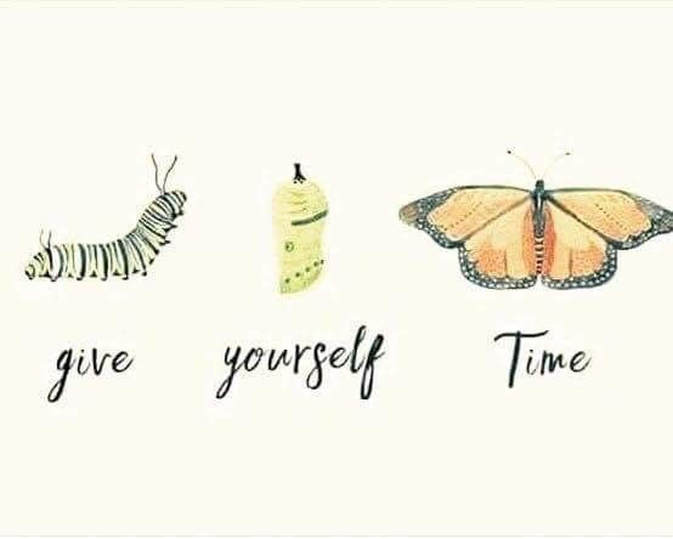

 RSS Feed
RSS Feed